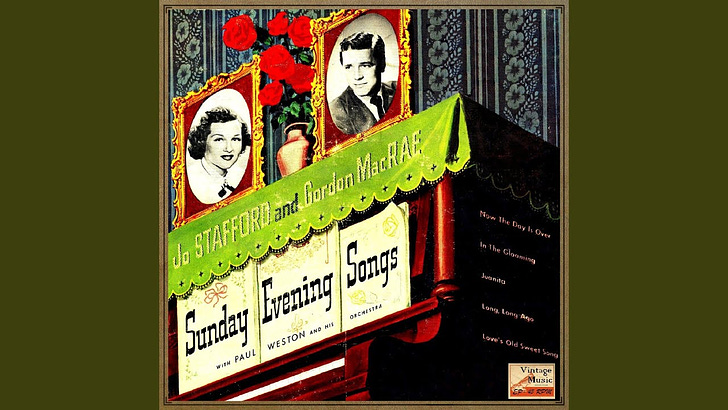When we began our Word & Song project back in July of last year, “Love’s Old Sweet Song” was my very first entry in Sometimes a Song. With “sweet” as our Word of the Week, I had no shortage of love songs to choose from. But the one that immediately returned to mind was “Love’s Old Sweet Song,” a song which never grows old. We’re hoping that the few who saw the original post won’t mind our sharing it again, with the many subscribers who have joined us since.
I’ve been thinking for a few weeks now that I must pull myself away — if only briefly! — from The American Songbook, source of such delight. As much as we love that compilation of songs from the great age of 20th century American popular music, there are other songs to listen to, among them some very fine folk songs. I’ve done a few of these already.
In the United States, we adopted many our “our” folk songs from the native lands of those who immigrated to America and brought their fine music with them. Music is portable, after all. If you are poor and moving across the ocean and far from home, perhaps you have to leave grandmother’s piano behind. If you are poorer still, you may have to leave behind all but the clothes on your back. But songs? Those you can carry in your head and heart, generations’ worth of music, priceless treasures, with no freight charges or extra baggage to pay for.
“Love’s Old Sweet Song” falls into the category called, Parlor Music, which in the late 19th century formed a bridge between folk (and popular classical) tunes and the high art of popular music that would dominate the field within a few decades. As the name suggests, Parlor Music was intended for enjoyment within the home, and began to appear early in 19th century (think of Stephen Foster; there were many others). In those days long before audio recording was possible, all sorts of music old and new found its way to homes across the land in the form of sheet music, arranged to be played and sung not primarily by trained performers, but by ordinary people with a home piano and voices trained mostly through church and civic singing. Because that parlor music was so fine, it was in fact performed in theaters and music houses and in concert halls, and many of the tunes are still sung today as art song.
Parlor Music hit its peak of popularity in the late Victorian period both in the United States and England, where the lyric for “Love’s Old Sweet Song” was written, in 1880, by Graham Bingham. Mr. Bingham chose for his song a melody by a popular Irish composer of the day, James Lynam Molloy. Sometimes called “Just a Song at Twilight,” Graham Bingham’s song made its way across the Atlantic, where it was published in 1884, the same year that Huck Finn first appeared in print. The song was a favorite of Laura Ingalls Wilder, who featured it in the last book of her Little House Series, “These Happy Golden Years.” Imagine that “Love’s Old Sweet Song” had made its way from England to the wild American prairies of the late 1880’s, that Mary Ingalls likely played it on the family’s prized parlor organ, and that Laura and Almanzo sang this song together while courting, as they rode out in their buggy of a Sunday afternoon.
One hundred years after Laura’s birth, this song — having been widely performed and recorded throughout the first half of the 20th century — appeared in a book of folk music I own called, The American Songbook (Dover, 1964). The editor of that collection wrote in his brief introduction to the book that “As a tenderly appealing ballad, ‘Love’s Old Sweet Song’ remains ever popular and attractive to the American people.” In 1964 most Americans still knew and loved this song. I hope that you will too.
The loveliest version of the song I have found on video was recorded by two splendid singers of my parents’ generation, Jo Stafford and Gordon MacRae.




Lovely. I was going to note that this was another of those songs that has an "intro" section that is melodically different than the rest of the song (is there a musical term for that practice?), but I see in a comment or your reply to a comment below that it may be just the first verse of other verses not shown or played. But in any case, it served a purpose for me here.
We mentioned and talked about that sort of thing (ie, a seemingly musically "different" intro for a song) in an earlier Sometimes a Song column, and I have felt that that practice reminded me of something, but I couldn't quite put my finger on it. But hearing this song, for some reason, popped the connection into my head just now. I'm thinking those "intros" before the main melody or chorus takes over, are like the teaser opening scenes of most modern movies these days before the introductory title and credits get displayed and the "meat" of the movie only actually begins after that.
Curious, since (am I remembering correctly?) I think most "old" movies pretty much opened up directly with the title and credits first, and only afterwards did the movie proper begin to play. But these days, it is almost mandatory for movie to have an opening scene to draw the viewer in, then the title and credits followed by the movie proper. Virtually the opposite development from popular songs (at least some) that used to have an intro section first, but modern songs, for the most part now, jump right into the gist (whether chorus or verse) of the song (though an instrumental intro is common enough of course).
This is precious. Thank you.